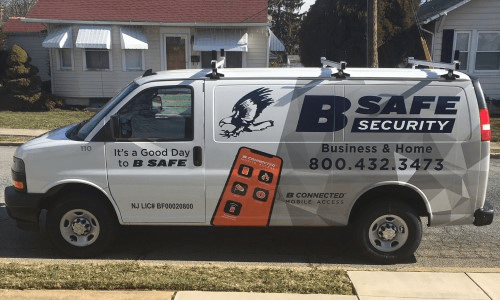
10.22.21 – SSI
B Safe credits its false alarm success to proper customer training at installation, standard dispatch procedures for every system that are easy for the customer to understand and the use of new technologies.
Founded in 1978, today B Safe Security is a leading regional provider of monitored security and fire/life-safety systems to more than 26,000 clients in Delaware, Maryland, New Jersey and Pennsylvania.
“B Safe Security has been committed to reducing false police dispatches since the 1990s,” says B Safe President Phil Gardner, who has spent 38 years with the company. “Our standard practice has always been to call the subscriber on any alarm; ‘Don’t call us, we’ll call you.’ This reduces and eliminates the need and time for customers to call us to cancel an alarm.”
That’s an example of the companywide commitment to reducing false alarms that earned B Safe a PDQ runner-up citation. In addition, B Safe Security strongly recommends subscribers use their alarm keypad arm/disarm code as the passcode for monitoring station to cancel alarms.
According to Gardner, the firm’s average customer only triggers their alarm system once every 18 months on average, which means subscribers frequently forget potentially obscure passwords they set months ago prior when their system was first installed.
Needing to recall it so seldomly, they tend to struggle or fail to come up with the arm/disarm code when they need it.
“By just implementing that simple, standard procedure, the New Castle [Del.] Police told us we had the lowest false dispatch rate of any alarm company of size in their jurisdiction. Back in 2007, with the assistance of B Safe, the Delaware Alarm Association and SIAC, the state of Delaware implemented two-call verification as the standard alarm response required for all alarm companies. B Safe has expanded that practice to all the states we do business in.”
That action, says Gardner, has led to B Safe not having any customers cancel their monitoring services due to excessive false dispatches or caused them to incur the jurisdictional fines imposed since the implementation of two-call verification. B Safe also installs and programs every system in accordance with the SIA CP-01 control panel standard, which provides for a 60-second exit/entry delay and other proven false alarm prevention best practices.
“More recently, with the advent of new remote interactive technologies,” continues Gardner, “one method that has been successful in helping further reduce our false alarms due to the customer not being able to disarm the system within the 60-second entry delay period is through an Alarm.com offering called Pending Alarm.”
Marketed by Alarm.com as Crash & Smash detection, this technology works during the alarm panel’s dialer delay. The property remains protected even if an intruder locates and destroys the panel or otherwise circumvents the system’s entry delay and finds another way in.
As soon as the security system goes into an alarm state, a pending alarm signal is transmitted to Alarm.com and can be routed to the central station, even if an ‘Alarm’ message is not received shortly after due to panel damage.
“Pending alarm notifications are included with full alarm notifications. It is not possible to receive full alarm notifications and not receive pending alarm notifications,” explains Gardner. “Another way we help prevent false dispatches is with the use of Alarm.com Notifications.”
In that scenario, when an event occurs Alarm.com alerts the recipients who have been selected to receive the notification the opportunity to determine if there is a true alarm prior to receiving the verification call. In doing so they can then determine if a dispatch of the authorities is necessary.
“With proper customer training at installation, simple, standard dispatch procedures for every system that are easily understood by the customer, plus new technologies, false dispatches are a nonissue for B Safe,” concludes Gardner.
